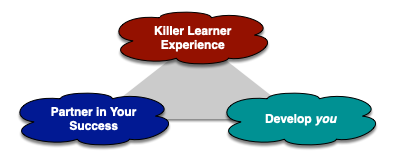In case you didn’t see it, eLearn Mag has posted my book review of Mark Warschauer’s insightful book, Learning in the Cloud. To quote myself:
This is … a well-presented, concise, and documented presentation of just what is needed to make a working classroom, and how technology helps.
As one more teaser, let me provide the closing paragraph:
The ultimate message, however, is that this book is important, even crucial reading. This is a book that every player with a stake in the game needs to read: teachers, administrators, parents, and politicians. And not to put too delicate a point on it, this is what I think should be our next “man in the moon” project; implementing these ideas comprehensively, as a nation. He’s given us the vision, now it is up to us to execute.
I most strongly urge you, if you care about schooling, to read the book, and then promote the message.
 An absolutely killer learning experience
An absolutely killer learning experience